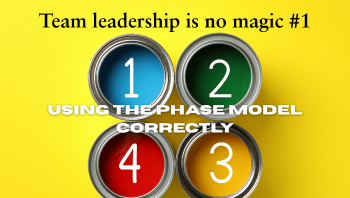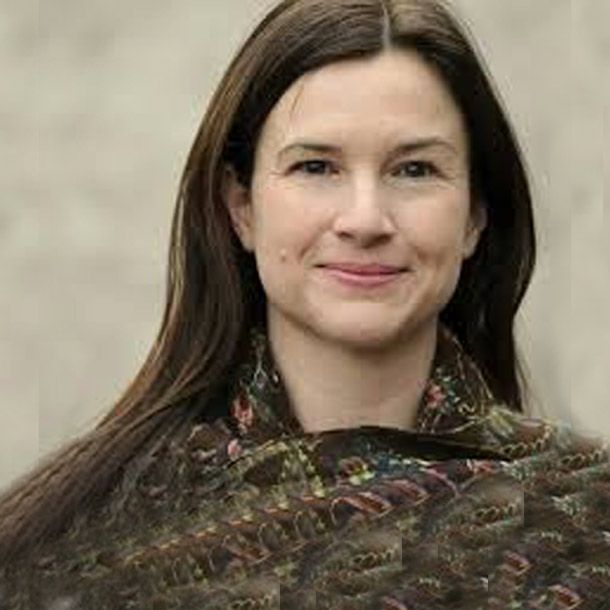Team Leadership is no magic - Part 1: Using the 4 Phases model correctly
Teams are at the heart of every organization. But not every team truly works together. Sometimes collaboration feels more like a chaotic band rehearsal:
everyone plays their own thing, no one listens to the others, and the drummer with the big ego is just way too loud.
Why is that? The key lies in the group dynamics. They determine whether a team acts productively, creatively and resiliently – or whether it gets stuck in endless discussions, subliminal conflicts or paralyzing ambiguity. The good news is that team leadership is not magic. With the right impulses, leaders and team members alike can positively influence the dynamics.
The diagnosis: Different perspectives help in the search for the greatest progress for strong team performance.
When we support teams on their way to really good collaboration, we always have different perspectives with which we look at the status quo in order to then find the best lever for more efficient and better collaboration and to start there.
One of these glasses is the “phase model”. Not new, but really an absolute basic in the diagnosis - and at the same time in finding out what exactly can help this team. Others are the level model of communication or the TCI, but another time for that :-)
The 4 phases of a team - and how to master them
Every team goes through typical stages of development. Each one is important and has its own function! If you recognize and understand these, you can better control how the team can move faster into the productive phase.
1. Orientation - Finding Each Other - Forming – Who are we and what are we/I doing here?
The first meetings are characterized by uncertainties: Who takes on which role? What unspoken rules apply?
🔬You can recognize this phase by the fact that everyone is on their best behavior and communication is polite and reserved. You can also recognize it by the fact that everyone is oriented towards the person or persons who are supposedly highest in rank in the room or, if available, towards the agenda. Conflicts, on the other hand, are avoided like the last biscuit on the conference table :-)
In this phase, you need: a safe space! Encourage openness. Clarify expectations and roles early on. Questions like, “What do you need to work well together?” help to create a sense of security.
2. Confrontation - Showing Oneself - Storming – Clash of Perspectives
Now it gets exciting – and sometimes uncomfortable.
🔬You can recognize this phase by the clash of different opinions, the friction between egos, and the subliminal tensions that arise. Some conflicts are obvious (loud discussions), others hide in sarcasm or silent frustration. Sometimes the mood feels a bit like a new ice age...
In this phase, it takes: This you is so important! Because for good teamwork, you need different perspectives and positions. The more clearly you work these out here with regard to the important points, the more “food” you will have for good and sustainable decisions later on. Stay objective. Promote a culture in which different opinions can be expressed and constructively negotiated. Conflicts are not the problem – unresolved conflicts are.
3. Agreement - Commitment - Norming - Now it's getting binding!
The team begins to agree on shared values, processes and rules.
🔬You can recognize this phase by the fact that there is a clearer agreement on what the common goal and shared responsibility is, how collaboration works, etc. Communication becomes productive, and interactions with each other become respectful.
In this phase, you need: Promote clear agreements and transparency. Visualize important agreements. Shared routines and check-ins help to ensure stability.
4. Performing – Working together smoothly – The high-performance team
Now the team is on track.
You can recognize this phase by the fact that roles are clear, conflicts are resolved constructively and there is an atmosphere of trust. Creativity and productivity increase – and the team can react flexibly to challenges.
In this phase, it needs: Use the strengths of each member in a targeted way. Provide regular feedback, encourage innovation and celebrate successes together.
How can a team reach the performing phase faster?
Some teams reach the performing stage after weeks, others need months – or get stuck in the early stages. Sometimes teams are in different phases in relation to individual topics or issues. In addition to the above, there are general levers that you can use to accelerate the process:
- Clear goals and roles: Unclear expectations slow teams down. The faster the distribution of tasks is clarified, the better.
- Creating psychological safety: Real collaboration arises when team members dare to speak openly, admit mistakes and try out new ideas.
- Resolving conflicts constructively: Tension is part of the development. What is important is that it is addressed openly and respectfully.
- Living shared values: Teams that agree on clear principles and see diversity as a strength work more effectively.
- Regular reflection: short check-ins help to identify the current team phase and to work specifically on improvements.
Conclusion: leadership means shaping dynamics
A successful team does not happen by accident – you can consciously promote and shape it. Leaders and team members who understand and actively shape group dynamics create an environment in which collaboration is not only efficient but also inspiring. 🚀


About me

All Rights Reserved
Get in touch
-
+49-(0)941 600 93 003
-
This email address is being protected from spambots. You need JavaScript enabled to view it. -
Thomas_Huber
ToChange Gmbh
-
Thomas Huber
-
Traubengasse 6
-
D-93059 Regensburg

